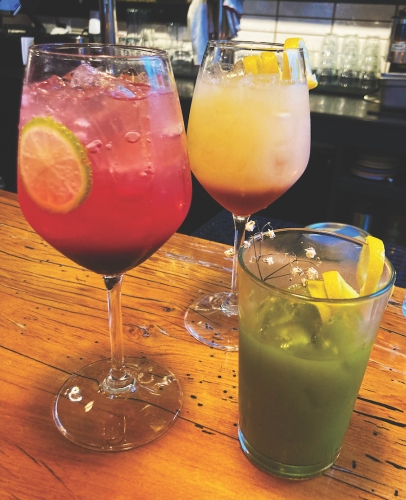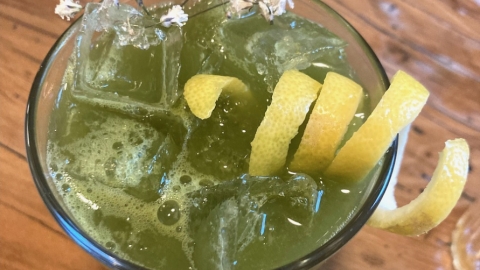A Toast to Dry Drinks
“There’s a million and one reasons why somebody wants to not drink on a particular evening,” says Greg Van Wagner, wine and beverage director at Parc Aspen. In response to that, the restaurant’s menu includes two nonalcoholic drinks that, between them, feature grapefruit, ginger, hibiscus, lime, and rosemary among many other ingredients.
“We wanted to have interesting and unique no-alcohol cocktails that are interesting, go with the food, and offer a unique experience without having to get a sparkling water or Coca-Cola.”
He’s run the numbers, too. And he says definitively that both of Parc’s no-alcohol cocktails, called Alpine Air and The Hummingbird, sell extremely well. “People are responding to them,” he says.
Ditching the booze—beyond Dry January or Sober October or whatever the occasion may be—is a growing trend across the nation. According to consumer intelligence company NielsenIQ, 22 percent of consumers cut back on alcohol consumption in 2022, and sales of alcohol decreased while sales of nonalcoholic beverages rose in the United States. Even Carnival Cruise Line partnered with a nonalcoholic spirit company to cater to guests craving flavor without the hangover.
Going beyond the staid and sugary Shirley Temple “mocktail” of the 1930s is essential. As is deep creativity, says Jeff Graham, bartender at the Tiny Pine Bistro in Carbondale. “People want something complex,” he says. “We use just as much brainpower with our nonalcoholic cocktails as with our regular drink menu. There are all kinds of fantastic, fun, and really good ingredients you can use to create complex flavors that go through your palate slowly.”
Graham says creating Tiny Pine’s no-alcohol menu has been like venturing into uncharted territory. “You know creating regular cocktails is not reinventing the wheel, it’s usually based around the spirit. But for the nonalcoholic drinks, I start fresh with just an idea or a particular ingredient.”
One of the most popular on Tiny Pine Bistro’s menu is a honey lavender matcha made with Colorado Mountain Honey that is harvested between Glenwood and Carbondale. The matcha is from Basalt-based Two Leaves and Bud organic tea company. Graham created a syrup from the honey and infused it with lavender to add more variety and flavor to the drink.
“Nobody around here is doing a matcha drink and so many people here are into the health and like it,” he says. “So, I think about what people like and also seasonality, complementary flavors that bring out a bigger body, and not making anything overly sweet.”
For those creating alcohol-free drinks at home, Graham advises to cut the white sugar. “My number one thing to tell people is replace it with something that is good and natural, like honey.” He uses honey and demerara sugar, as well as Mexican vanilla or his own shrubs (slightly acid cordials made from fruit juice and water) and syrups (like ginger, raspberry, and grapefruit).
As Graham mixed up drinks for customers one evening in March, in the span of 20 minutes he had whipped up as many nonalcoholic cocktails as boozy ones. So, maybe it’s true that no-alcohol drinks are having their moment, because big flavors are a-brewing, with a different kind of buzz.







